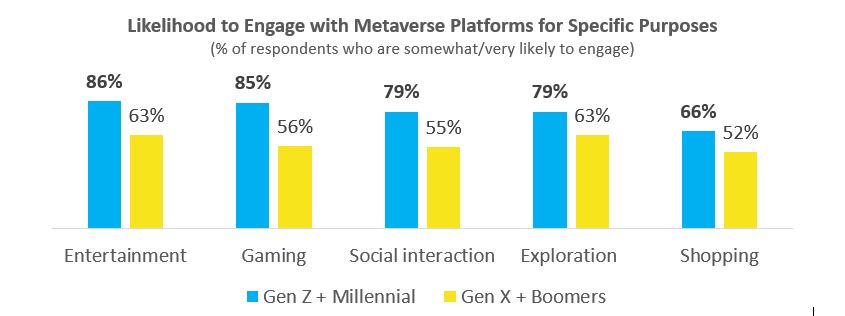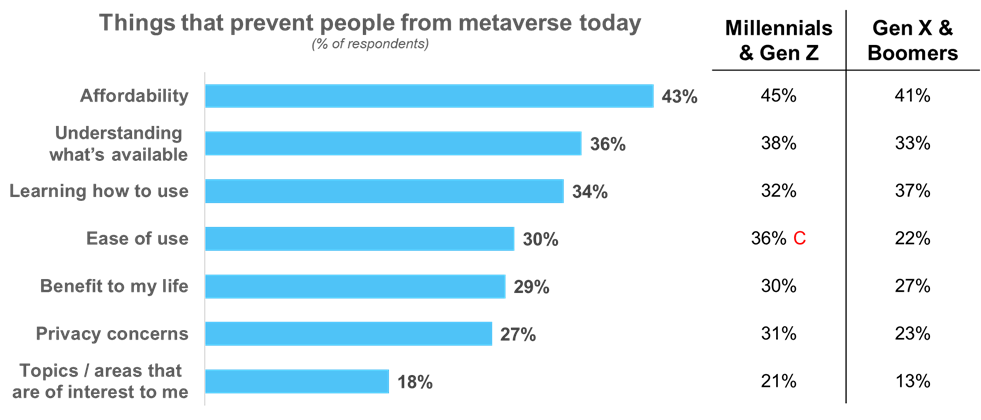News broke recently about Apple’s new mixed reality headset. While it’s notable for those of us who regularly work in and interact with virtual reality and metaverse experiences, the leaked news is not without controversy. An Apple launch in this space could truly redefine the headset-based metaverse platform landscape. That’s exciting, but what does that mean from a big picture perspective?
When most people imagine the metaverse, they automatically think of headsets and virtual reality. However, consumers today are primarily interacting with extended reality and metaverse experiences via laptop, tablet, and mobile devices. A new Apple headset (if the rumors are true) would likely drive fully immersive virtual adoption, but there’s significant opportunity for the metaverse as it applies to everyday experiences.

Last time, we dug into a bit of how consumers are engaging in metaverse experiences and systems today. As we dive deeper into a recent survey conducted by InContext, we want to explore attitudes around how consumers want to engage in metaverse experiences in the future.
The majority of consumers are interested in the metaverse
While both consumers and companies remain skeptical about how successful commercial metaverse experiences are today, over 60% of consumers – regardless of age – say they would be likely to engage in metaverse platforms in some way in the future. Unsurprisingly, Gen Z and Millennials were more likely than Gen X and Boomers to want to engage across the board. However, more than half of older consumers said they would likely engage for any reason. Six of ten older consumers said they’d actively engage in metaverse experiences for entertainment and exploration, and half said they’d shop in the metaverse.

Affordability and awareness keep people out
Ultimately, we know people want to engage. They use their smartphones or tablets, laptops, and gaming systems. And with the right products on the market, we’ll see significant increases in headset adoption in the future.
The key question is what are the barriers that prevent people from engaging in metaverse experiences today? It comes down to a couple things: having the budget to invest in the right platforms, and the fact that today’s consumers don’t really understand what platforms are available and how to use them. These are consistent reasons regardless of age. These barriers can be addressed with the right products on the market and the right consumer marketing and communication.

We’ve previously explored how people use metaverse experiences today and what they might do in the future to engage. We also dug into barriers to utilizing metaverse platforms. Next, let’s explore what US consumers expect in metaverse and extended reality brand and commerce experiences in the future. More than 60% of adults in the US want to use these platforms to explore and shop. What should that look like? Contact us to learn more and to discuss how to start building your metaverse strategy roadmap.
This post was written by Diana Sheehan, Principal – Consulting Services





